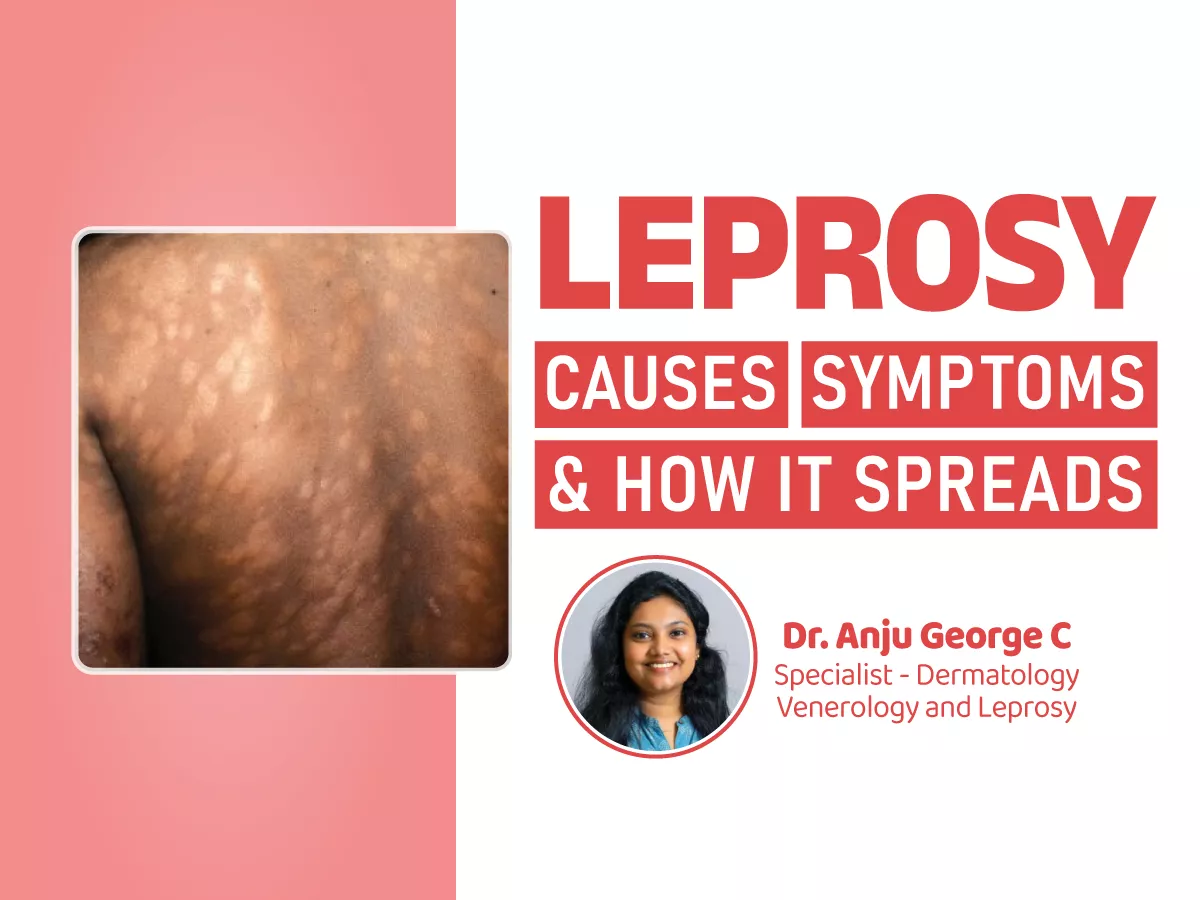Leprosy, also known as Hansen’s disease, is a chronic infectious disease that has been surrounded by stigma and misconceptions for centuries. Though it is rare and curable today, understanding its causes, symptoms, and modes of transmission is crucial for early detection, treatment, and prevention.
What is Leprosy?
Leprosy is caused by Mycobacterium leprae, a slow-growing bacterium that primarily affects the skin, peripheral nerves, mucous membranes of the upper respiratory tract, and eyes. Despite its long history, leprosy remains a misunderstood disease, often leading to delayed diagnosis and unnecessary fear.
Thanks to advancements in medicine, leprosy is now treatable, and early intervention can prevent complications such as disability or disfigurement.
Causes of Leprosy
Leprosy is caused by the bacterium Mycobacterium leprae, which thrives in cooler parts of the body, such as the skin and peripheral nerves. Researchers believe that a weakened immune response to the bacteria plays a significant role in the development of the disease.
Risk Factors
- Close Contact: Prolonged close contact with an untreated person can increase the risk of infection.
- Living Conditions: Poor sanitation and crowded living conditions may contribute to the spread.
- Genetic Susceptibility: Some individuals may have a genetic predisposition that makes them more susceptible to leprosy.
How Does Leprosy Spread?
Leprosy spreads through prolonged exposure to droplets from the nose and mouth of an untreated infected person. This can happen when the person coughs, sneezes, or talks. It is important to note that leprosy is not highly contagious, and most people (95%) have a natural immunity to the disease.
Contrary to myths, leprosy does not spread through:
- Casual contact, such as shaking hands or hugging.
- Sharing food, water, or clothing.
- Sexual activity or pregnancy.
Symptoms of Leprosy
Leprosy has a long incubation period, ranging from a few months to over 20 years, which can make it challenging to trace the source of infection. The symptoms depend on the type of leprosy, which is classified based on the immune response.
Common Signs and Symptoms
Skin Lesions
- Painless, pale, or reddish patches on the skin.
- Loss of sensation in the affected areas.
Nerve Damage
- Numbness or tingling in the hands and feet.
- Muscle weakness or paralysis.
- Thickened peripheral nerves, which may feel lumpy under the skin.
Eye Involvement
- Reduced blinking or vision problems due to nerve damage.
Nasal Symptoms
- Chronic nasal congestion or nosebleeds.
Types of Leprosy
Leprosy is classified into different types based on the severity and extent of the disease:
Tuberculoid Leprosy
- Limited to a few skin lesions and minimal nerve damage.
- Strong immune response.
Lepromatous Leprosy
- Widespread skin lesions and significant nerve damage.
- Weak immune response, leading to higher bacterial loads.
Borderline Leprosy
- Features of both tuberculoid and lepromatous forms.
Diagnosis and Treatment
Diagnosis
Leprosy is diagnosed through:
- Clinical Examination: Checking for skin lesions and loss of sensation.
- Skin Smears or Biopsies: Detecting Mycobacterium leprae.
Treatment
Leprosy is treated with a combination of antimicrobial agents called multidrug therapy (MDT), which is provided for free by the World Health Organization (WHO). MDT includes:
- Dapsone
- Rifampicin
- Clofazimine
Treatment duration depends on the type of leprosy but usually lasts 6 to 12 months. Early treatment prevents complications and interrupts transmission.
Prevention of Leprosy
- Early Diagnosis and Treatment: Prompt treatment of infected individuals prevents the spread of the disease.
- Public Awareness: Educating communities to reduce stigma and encourage early diagnosis.
Conclusion
Leprosy, though rare and treatable, continues to affect lives worldwide. By understanding its causes, symptoms, and transmission, we can promote early diagnosis, ensure effective treatment, and eliminate the stigma surrounding the disease. Empowering communities with knowledge is the first step toward eradicating leprosy once and for all.






